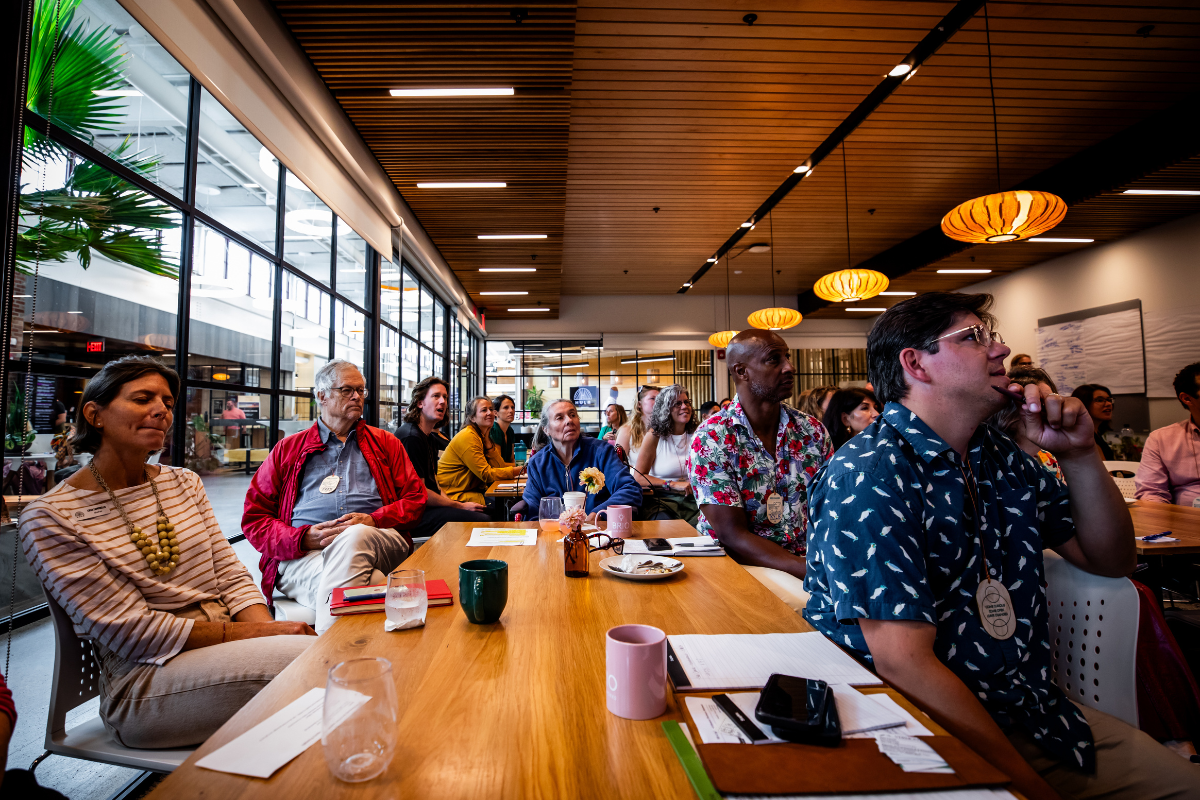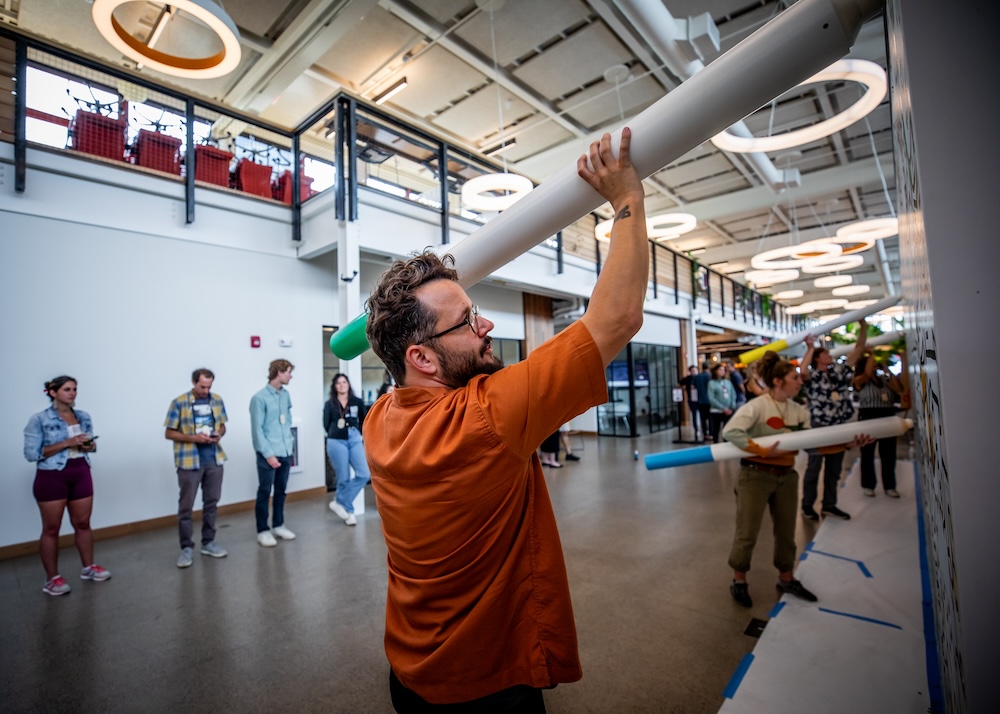CASE STUDY: Placemaking—Using Place to Cultivate Interdependence & Belonging

Prepared & Facilitated by:
Kim Nolan
The following case study outlines the intention and outcomes of a special gathering of inspiring people with distinct backgrounds that unfolded through a unique work/play methodology, hands-on experiences, and focused discussions to inspire new ideas, shift perspectives, and forge meaningful connections.
The problem → Across many industries, it’s common for professionals to prioritize their own specialized knowledge above all else — and often for good reason! Where would we be without the studied expertise of niche specialists? However, an unfortunate and all-too-common side effect of that siloed specialization is an overlooking of the intuitive insights of “non-experts” and end users — the communities that places are built for.
The challenge → Illuminate pathways to platform the human aspect of planning. How do we break down silos between architects, engineers, landscape designers, storefront creators, transportation departments, housing boards, developers, and policy makers to communicate and collaborate more effectively with local communities?
We aimed to explore the importance of thinking beyond aesthetic design and toward a philosophy that elevates the practical and social interactions that occur within a space that can heal, restore, and ignite connection in our communities.

LAB OBJECTIVES
These sessions inspire and equip attendees to become placemakers in their communities, focusing on practical ways to put placemaking principles into action. Key themes include:
- Community Voices: Prioritize local insight in design by truly listening to what people need from their spaces.
- Bridging Disciplines: Foster collaboration across sectors to create spaces that enhance social connections and community pride.
- Balancing Public and Private Agendas: Explore ways to align public inclusivity with private interests for the greater good.
- Creative Action: Engage in hands-on exercises that push the boundaries of placemaking ideas.
- Inner Reflection: Connect personal values with placemaking to create spaces of belonging.
- Diversity and Belonging: Focus on strategies for inclusive design that reflects community diversity.
- Collaboration & Shared Learning: Work in groups to tackle placemaking challenges, gaining new insights and building a support network.
Important terminology to understand before reading:
Download the Case Study
To download the full case study, please fill out a few simple questions — it's quick, easy, and free :

